Want to improve the quality of your isolation space? These are the air purifying indoor plants to know about.
With increasing evidence that air purifying plants can clean the air in our homes and have a positive effect on our mental wellbeing, there's never been a better time to invest in one.
Whether you live in a polluted city or you're looking to bring more zen into your isolation space, air purifying indoor plants could improve the quality of the air you breathe during lockdown.
Now that we're spending more time than ever at home, you're probably thinking of ways to boost your happiness, remove toxins and add a touch of nature to your space. Well, we've done the research to bring you all the information you need to bring an air purifying plant into your home.
Do air purifying plants work?
According to a NASA study from the 1980s, a number of common house plants can absorb carbon dioxide and release oxygen through photosynthesis.
As this research was conducted under sealed space station conditions, we spoke to Dr Tijana Blanusa, the Principal Horticultural Scientist at the RHS, to find out whether air purifying plants really work in the home.
"Over the last few years, there was much scientific investigation around the impact of houseplants on indoor air quality, particularly on their ability to remove CO2 and volatile organic compounds (VOCs) e.g. emitted from paints and furnishings, to name some sources," explains Dr Blanusa.
"Scales of study differed – from individual plant to room scale. Results to date suggest that due to typically low light levels indoors the contribution of individual plants to the removal of these compounds is relatively low and that either higher light levels or larger numbers of plants are required to elicit an effect."
Are there other advantages to introducing air purifying plants into your space?
"Certainly! There is mounting scientific evidence about positive impacts of houseplants on productivity and wellbeing."
Dr Blanusa adds that a recent RHS-supported case study in an office environment found that introducing desk plants had significant positive effects on people's focus, creativity and productivity.
Aside from improving the quality of your work-from-home space, they're also more cost-effective air purifiers than the ones that use electricity.
What are the best air purifying plants to buy?
"Which plants to choose depends greatly on your room conditions (light levels, temperature and humidity)," says Dr Blanusa.
"Generally good all-rounders and relatively easy-to-grow plants include peace lilies, zamioculcas zamiifolia and devil’s ivy, to name a few".
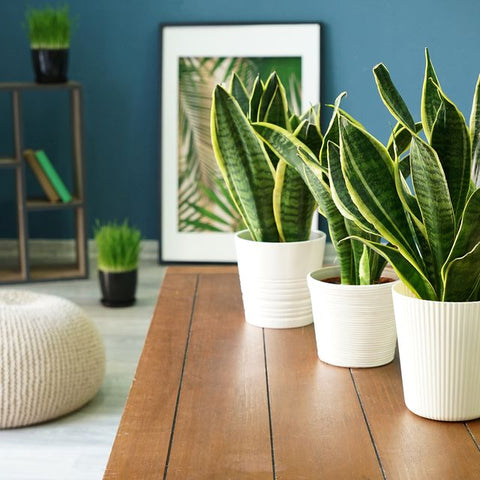
Here are 12 of the best air purifying house plants.

1. Aloe Vera
A sunburn soother, face mask ingredient and air purifying plant, aloe vera is the multi-tasking succulent every house needs. It's especially good at filtering out formaldehyde, which can be found in wood varnishes and carpets.
NASA says aloe vera is one of the best air purifying plants you can buy as it continuously releases oxygen throughout the night while simultaneously taking in carbon dioxide (a good one for adding to the bedroom too). It's also relatively easy to maintain and particularly forgiving of forgetful waterers.
Position: In a bright spot but indirect light.
Care: Water it heavily once every two weeks.
Toxicity: Toxic to cats and dogs.

2. Dypsis lutescens
Also known as golden cane palm, bamboo palm and areca palm, dypsis lutescens is a popular palm to have in the home as a tropical species native to Madagascar.
It is an air purifying plant identified by NASA as one of the best at removing formaldehyde and ideal for daytime oxygen production. It also helps restore moisture to dry air.
Position: In a bright spot but not the full sun.
Care: Give the palm lukewarm water two to three times per week in the summer and once a week in the winter.
Toxicity: Non-toxic to cats and dogs.
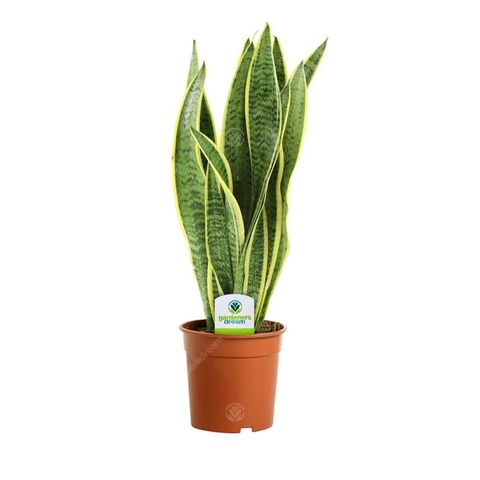
3. Snake plant
Native to tropical west Africa, the snake plant, or mother-in-law's tongue, is an air purifying plant that is recommended for the bedroom. It converts carbon dioxide to oxygen while you sleep and is an affordable pick, also on NASA's list, which is known as the 'bedroom plant'.
It filters formaldehyde, trichloroethylene, xylene, toluene and benzene from the air, and around six to eight of them are recommended per person in the home if you want to get the best out of this air purifier.
Position: Snake plants thrive in most light conditions, withstanding full sun and low light.
Care: Very little water every few weeks when the soil feels dry.
Toxicity: Toxic to cats and dogs.
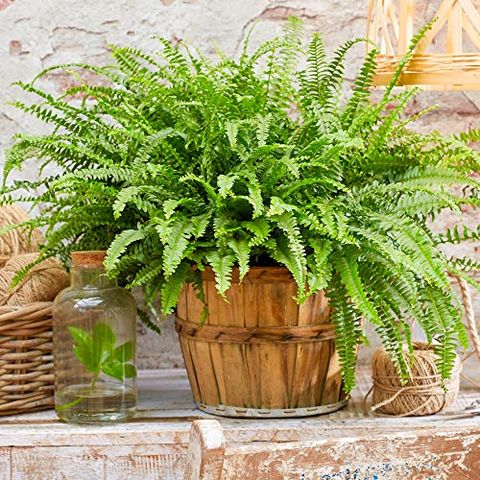
4. Boston fern
If nothing brings you more joy than tending to your houseplants, you'll get on well with the Boston fern, which likes attention.
Scientists say the lush green houseplant is worth the maintenance though as a 2010 study by the American Society of Horticultural Science found that ferns removed more formaldehyde from the air than any other plant. They can also remove pollutants from car exhausts entering the home.
Position: Keep in a cool spot out of direct light.
Care: Feed weekly in seasons when it is growing, monthly during the winter and regularly in general. Ferns like humidity so mist the leaves regularly or keep a tray with water and stones nearby.
Toxicity: Non-toxic to cats and dogs.

5. Peace lily
A stunning house or office plant, peace lilies are air purifying plants loved for their beautiful flowers. NASA and RHS-approved for having in the house, they help clear the air of formaldehyde, trichloroethylene and benzene, a known carcinogen.
It can improve the indoor air quality by 60 per cent and help reduce the levels of mould spores from the air.
Position: Peace lilies aren't fans of direct sun light as their leaves can burn so place it in a shady spot, while the flowers are more plentiful if they get more light.
Care: The low-maintenance air purifying indoor plant's leaves droop when it is thirsty, essentially telling you when it needs water, but once a week is recommended.
Toxicity: Toxic to cats and dogs.

6. Money plant
Hailing from east Asia, the money plant is easy to grow and propagate, making it great for those who are new to houseplants. Its round, flat leaves can grow up to 15cm and it's also known as the UFO plant or pancake plant.
It's not the most powerful of air purifying plants but as it's so pretty you might want to add a few of these around the home to maximise the benefits.
Position: Medium light is preferred. It likes part-shaded areas in well-lit rooms or a spot near a north-facing window.
Care: Water every seven days in the summer and every 10 days in the winter.
Toxicity: Non-toxic to cats and dogs.
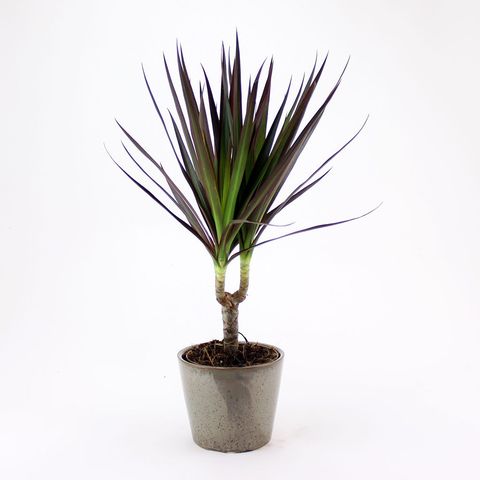
7. Dragon tree
The dracaena marginata, or dragon tree, is characterised by its sword-like leaves with red edges. The awesome air purifying plant is native to Madagascar and clears toxins including trichloroethylene and xylene.
It's tall, slim and ideal for placing on your desk as it requires little space or care. It's a slow grower too and can take around 10 years to reach five feet. Plus, it looks like a palm and while often mistaken for one, it's actually from the yucca family.
Position: It prefers light shade but close to a window.
Care: Water well in summer and less in winter, mist the leaves to keep the humidity levels high.
Toxicity: Toxic to cats and dogs.

8. Weeping fig
Their loose-hanging branches and dense foliage have made weeping figs popular since Victorian times. The air purifying plant clears common household toxins such as formaldehyde, xylene and toluene, and they're easy to maintain too.
The weeping fig likes high temperatures, which makes it ideal for having in the home and it is used to high humid levels above 50%.
Position: A spot in bright, indirect light is best, while some light shade is tolerated.
Care: Keep the soil moist at all times by frequently watering but avoid over-watering.
Toxicity: Toxic to cats and dogs.
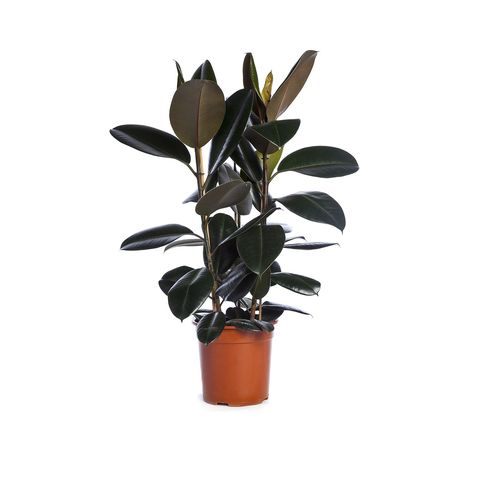
9. Rubber plant
The rubber plant, or ficus elastica, boasts glossy green leaves and is ideal popped on a table when it is small, before being repotted and placed on the floor as it grows taller for a fabulous statement plant.
Native to southern Asia, this air purifying house plant helps remove chemicals (especially formaldehyde) from indoor air. Its roots grow upwards and often form interesting shapes around the stems.
Position: It likes a bright room while kept out of direct sun.
Care: Water when the soil is dry, mist the leaves during the summer to increase humidity and avoid sudden drops in temperature.
Toxicity: Toxic to cats and dogs.

10. Zamioculcas zamiifolia
The zamioculcas zamiifolia, or ZZ plant, is used to extreme weather, from downpours to droughts, so it's an easygoing air purifying plant for beginners.
It's known for storing water for a long time and its eye-catching foliage makes it a hip plant that even the Instagram crowd loves. In terms of its air cleaning properties, the air purifying plant helps remove toxins like xylene, toluene and benzene.
Position: It withstands low light and likes indirect bright light too.
Care: Water when it is dry. The ZZ is forgiving to forgetful waterers and doesn't require a lot of water.
Toxicity: Toxic to humans and pets.
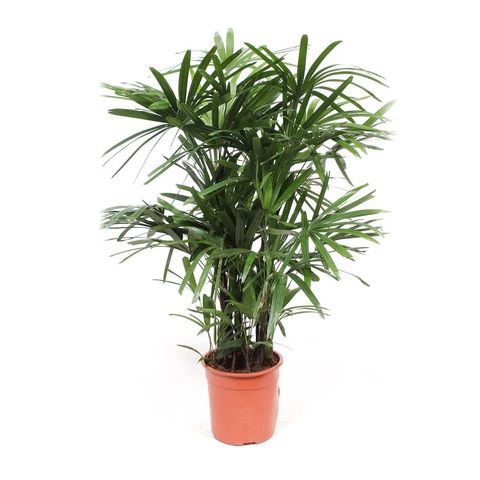
11. Lady palm
This gorgeous air purifying plant can stand as tall as six feet and tolerates dark spaces in the home. It's one of the best air purifying house plants for helping to reduce levels of ammonia, according to NASA, as well as formaldehyde, xylene and toluene.
Lady palm, or rhapis excelsa, is native to Asia and has a unique appearance of broad fan-like leaves and bamboo-style stems.
Position: It's happy in low-light areas and makes a good hallway or living room plant.
Care: The lady palm enjoys generous amounts of water, with proper drainage needed to avoid root rot.
Toxicity: Non-toxic to cats and dogs.

12. Devil's ivy
With its glossy, rich green leaves splashed with yellow, devil's ivy looks beautiful in the home and works as an air purifying plant. The indoor climber is native to French Polynesia and is named devil's ivy as it's almost impossible to kill and stays green even in the dark.
The air purifying house plant is efficient at removing pollutants like benzene, formaldehyde, trichloroethene, toluene and xylene, and the RHS says it has been hailed as one of the best houseplants for filtering the air.
Position: It likes bright filtered or indirect light.
Care: Water freely but make sure the soil dries out in between. Put it under a cold shower to wash the leaves every so often and repot every two years.
Toxicity: Toxic to cats and dogs.

